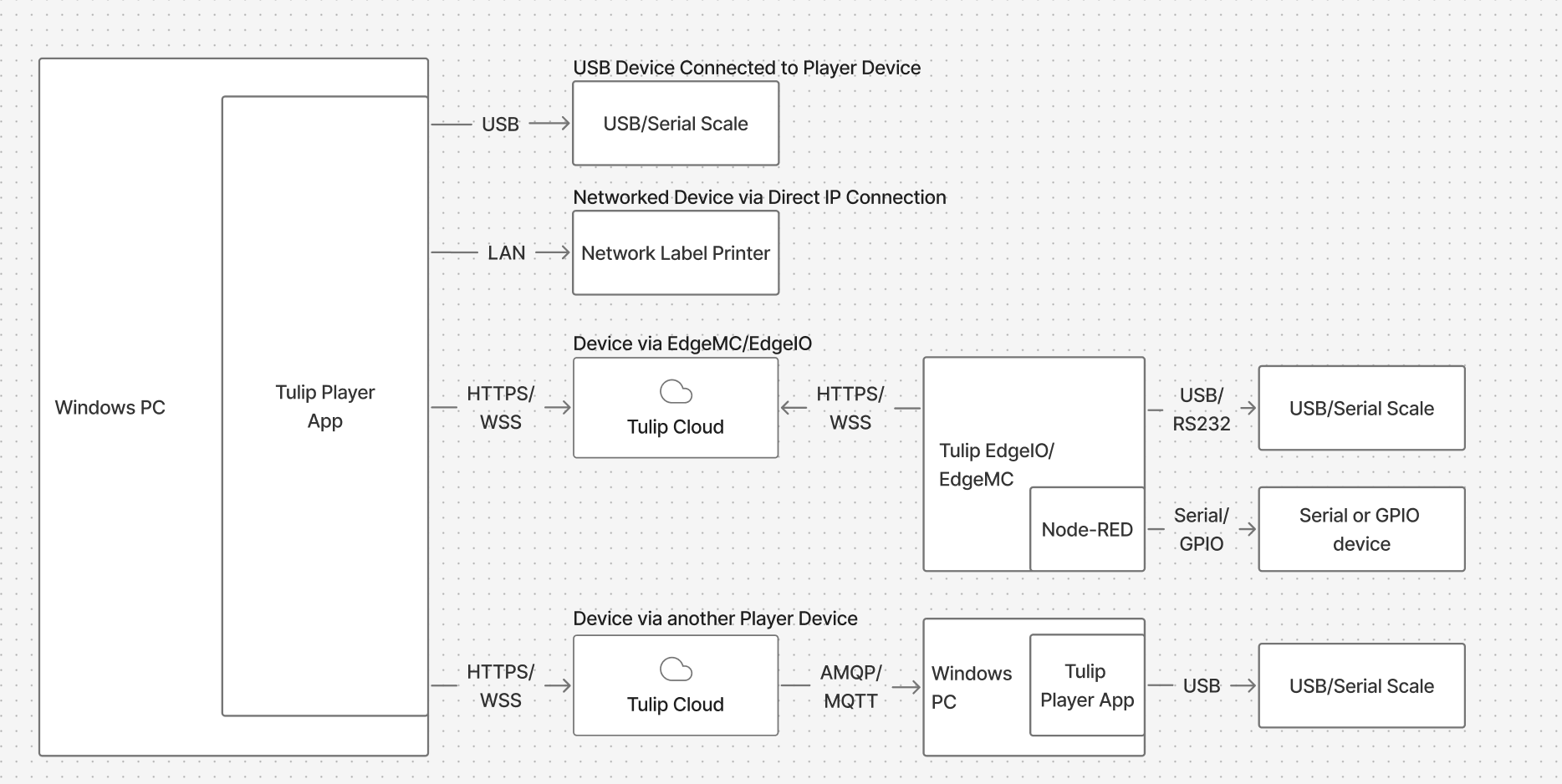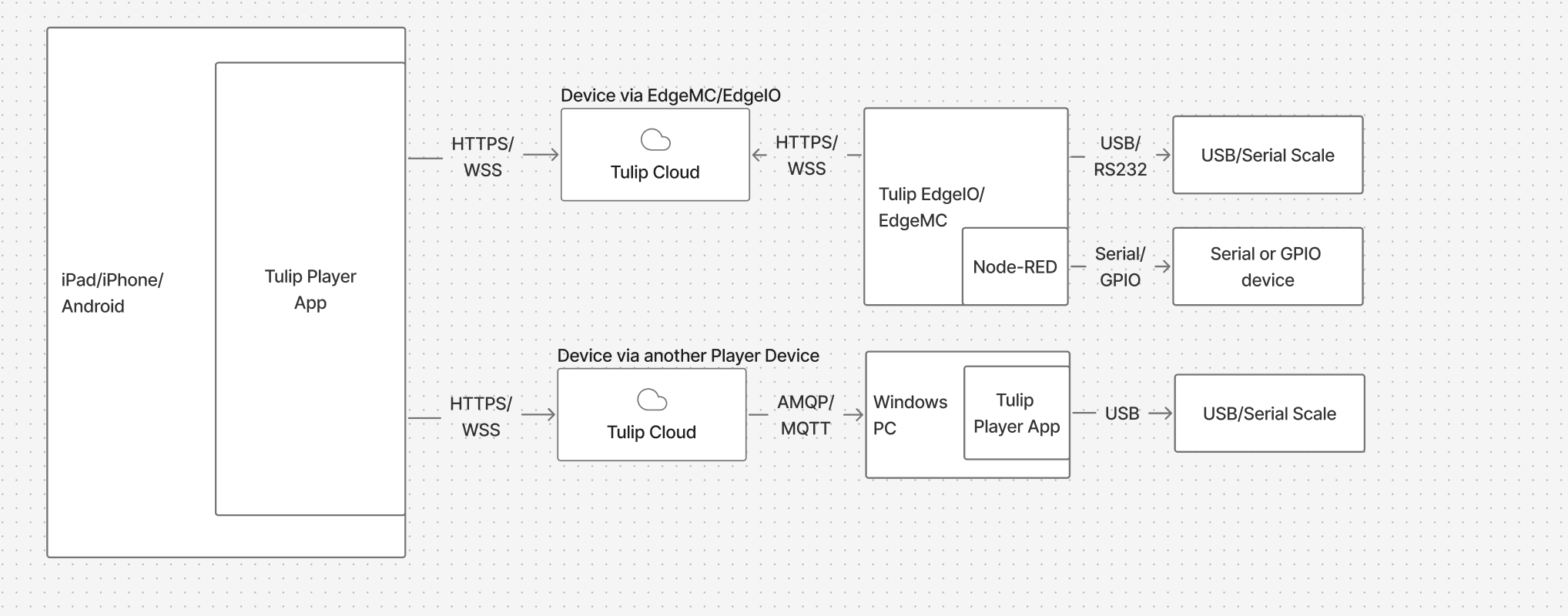目的
チューリップがどのようにデバイスとモバイルプレーヤーまたはデスクトッププレーヤーを接続するかについて説明します。
用語解説
- HTTPS - HyperText Transfer Protocol Secure(ハイパーテキスト・トランスファー・プロトコル・セキュア):SSL/TLSを使用してユーザーのブラウザーとウェブサーバー間のデータを暗号化するHTTPのセキュアバージョン。安全なウェブ閲覧やオンライン取引によく使用される。
- WSS - WebSocket Secure:HTTPS(TLS)上で動作する安全なリアルタイム通信プロトコル。チャット、ダッシュボード、IoTシステムなどのウェブアプリで双方向通信に使用される。
- AMQP - Advanced Message Queuing Protocol(アドバンスト・メッセージ・キューイング・プロトコル):システム間の信頼性の高い非同期通信用に設計されたメッセージング・プロトコル。エンタープライズ・アプリケーションやRabbitMQのようなメッセージ・ブローカーでよく使用される。
- LAN - ローカルエリアネットワーク:家庭、オフィス、工場などの限られたエリア内のデバイスを接続するプライベートネットワーク。LAN上のデバイスは、インターネットにアクセスしなくても直接通信できる。
- RS232 - 推奨規格232:コンピュータと周辺機器の接続に使用されるシリアル通信規格。古い機器や産業用機器によく見られ、単純な1対1の有線通信を使用する。
- USB - Universal Serial Bus(ユニバーサル・シリアル・バス): キーボード、ストレージドライブ、プリンターなどのデバイスをコンピューターに接続するために広く使用されているインターフェース。データ転送と電源供給の両方をサポートする。
- シリアル - 1本のチャネルまたはワイヤでデータを1ビットずつ送信する通信方式。RS232やUSBなどのプロトコルで使用され、組み込みシステムやハードウェア・インターフェースで一般的。
- GPIO - 汎用入出力:マイクロコントローラーやコンピューターのプログラム可能なピンで、デジタル入力(ボタンなど)の読み取りや出力(LEDやモーターなど)の制御に使用できる。
デスクトッププレーヤー
デスクトップ プレーヤーは、USB ケーブル、直接 IP 接続、または別のプレーヤー デバイスを介してデバイスに直接接続できます。さらに、USB/RS232/Serial/RS232と組み合わせてEgeデバイスを活用し、デバイスと通信することもできます。
 {高さ="" 幅=""}。
{高さ="" 幅=""}。
モバイルプレーヤー
モバイルプレーヤーは、別のプレーヤー機器を経由して機器に直接接続することができます。また、USB/RS232/Serial/RS232と連携してEgeデバイスを活用し、デバイスと通話することができます。
 {高さ="" 幅=""}。
{高さ="" 幅=""}。
